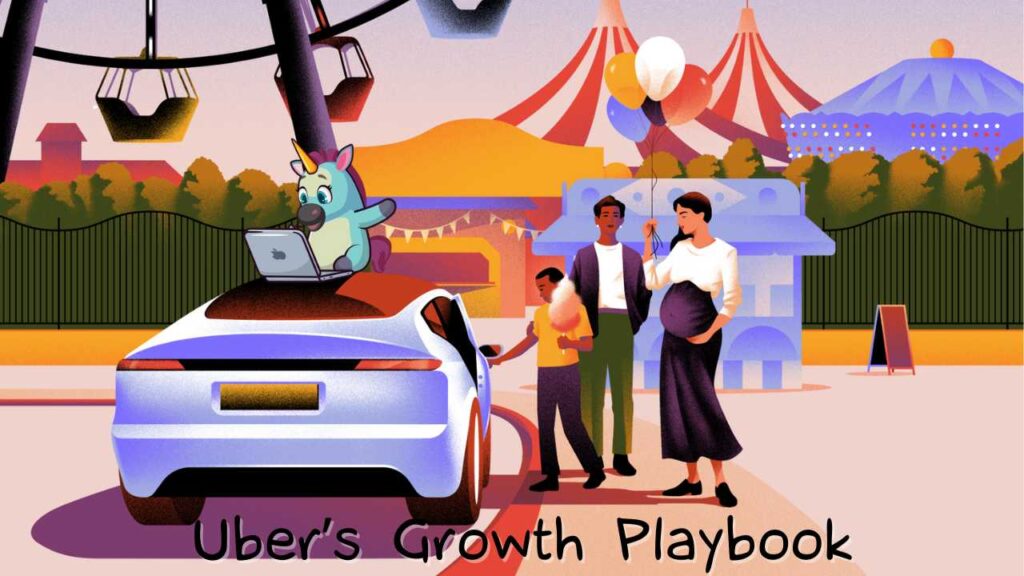
Hi there, unicorns! 👋
This week, we’re exposing Uber’s growth playbook – the ride-hailing giant that disrupted urban transportation.
From a simple idea to solve a taxi problem on a snowy night in Paris, Uber has grown into a global phenomenon valued at more than $140B.
But the road to the top wasn’t always smooth.
Uber faced its fair share of controversies and challenges, from regulatory battles to cultural missteps.
In this growth playbook, we’ll reveal the strategies and tactics that drove Uber to success, explore its impact on the transportation landscape, and examine how it navigated the ups and downs of its journey.
Grab a drink, and let’s hit the road!
The Idea💡
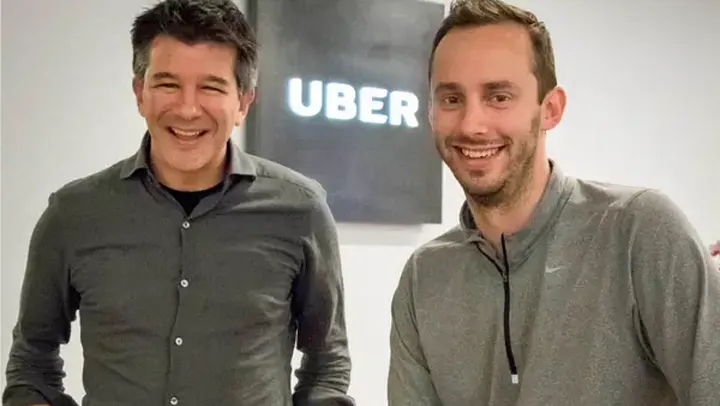
It was a snowy winter night in Paris in 2008.
Two friends and successful startup founders, Travis Kalanick and Garrett Camp, were attending the annual tech conference LeWeb.
More importantly, they were trying to get a cab but couldn’t find one.
What if you could just request a ride from your phone?
This idea, based on a very real need at that moment, is what has born the creation of Uber.
After the conference, the entrepreneurs went their separate ways, but when Camp returned to San Francisco, he continued to be fixated on the idea and bought the domain name UberCab.com.
In 2009, Camp was still CEO of StumbleUpon, but he began working on a prototype of UberCab as a side project.
At the time, UberCab was still an idea for a shared luxury cab service that could be ordered via an app.
The core idea was simple yet powerful:
Make getting a ride easy, affordable, and enjoyable for everyone.
The Problem 😫
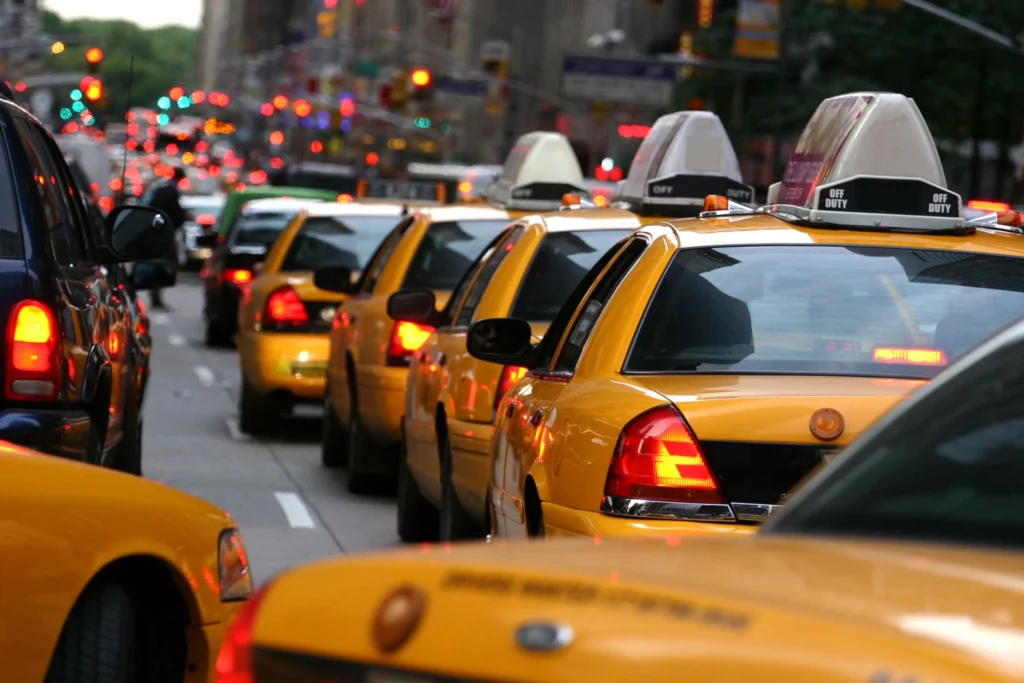
Before Uber, the world of urban transportation was a mess.
Traditional taxi services were stuck in the stone age, plagued by inefficiency and frustration.
Hailing a cab?
Good luck waving your arm in the air like a madman.
Need a ride during rush hour or bad weather?
Prepare for a long wait or no ride at all.
And don’t even get us started on the payment headaches.
Fumbling for cash, haggling over fares, dealing with “broken” credit card machines – it was a nightmare!
Plus, in many cities, the taxi industry was a monopoly, leading to poor service and sky-high prices.
This outdated system was crying out for disruption, and Uber was ready to change things.
The MVP 🛠️
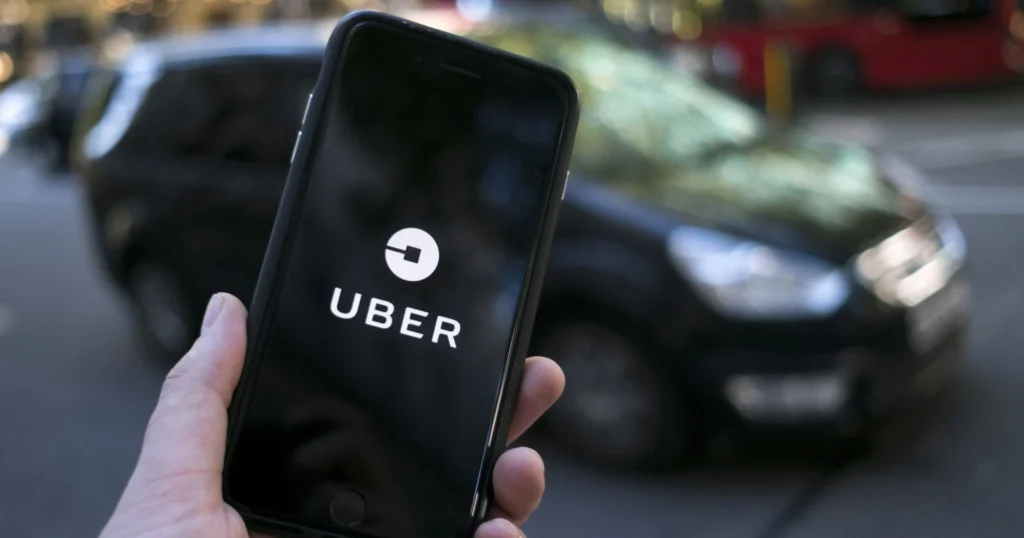
Uber’s MVP wasn’t just about building an app – it was about creating a whole new experience.
They launched in San Francisco, targeting the tech-savvy early adopters who were fed up with the city’s notoriously spotty cab service.
The real magic happened when these early users showed off the app to their friends.
With just a few taps, they could summon a sleek black car – talk about impressing your buddies!
This word-of-mouth showcase became Uber’s growth engine, turning every ride into a potential customer acquisition opportunity.
Product-Market Fit 🎯
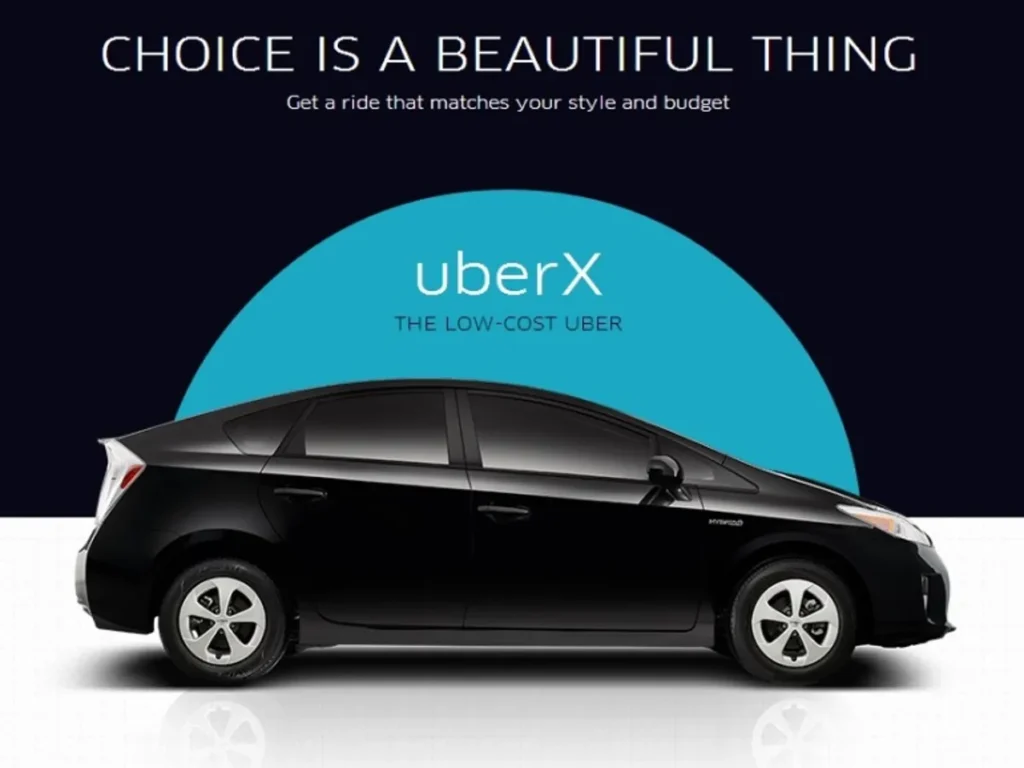
Uber’s journey to product-market fit was a wild ride, but they finally got there!
Let’s break it down:
In 2010, Uber launched in San Francisco, offering a premium black car service.
The tech crowd loved it!
Despite being pricier than cabs, Uber’s convenience factor was off the charts.
Hailing a ride through your smartphone?
Mind-blowing!
Word spread like wildfire.
Uber’s growth in SF was so explosive, they quickly expanded to other major U.S. markets.
By the end of 2012, Uber had gone global, launching in Paris, London, and Amsterdam.
But here’s where it gets really interesting.
In 2012, Uber faced stiff competition from Lyft’s lower-cost personal vehicle model.
Uber’s response?
UberX – a service that allowed hybrid car owners (and later, anyone with a personal vehicle) to become drivers.
UberX quickly became Uber’s most popular service, proving they understood exactly what customers wanted: affordability and accessibility.
This pivot showed Uber’s ability to adapt and evolve, cementing their product-market fit and setting the stage for their continued domination of the ride-hailing market.
Positioning & Branding 🎨📐

Uber’s positioning was crystal clear from the start:
They were the voice of everyday riders, democratizing access to convenient, on-demand transportation.
Their name, inspired by the German word “über” meaning “above” or “over,” perfectly aligned with their mission to elevate the transportation experience.
Uber’s initial branding was sleek, modern, and approachable, with a bold black-and-white color scheme that exuded sophistication and reliability.
Their messaging emphasized simplicity, convenience, and empowerment, with taglines like “Everyone’s Private Driver” and later, “Move the way you want.”
Across every touchpoint, from their app design to their marketing campaigns, Uber consistently reinforced their positioning as the go-to platform for hassle-free rides.
This strong, consistent branding helped Uber quickly become a household name and a verb – “Let’s Uber there!” – winning their place in popular culture and urban life.
However, as we’ll see later, a series of scandals and controversies would force Uber to rethink and rebrand their image.
But more on that juicy drama later!
Pricing 💰📊
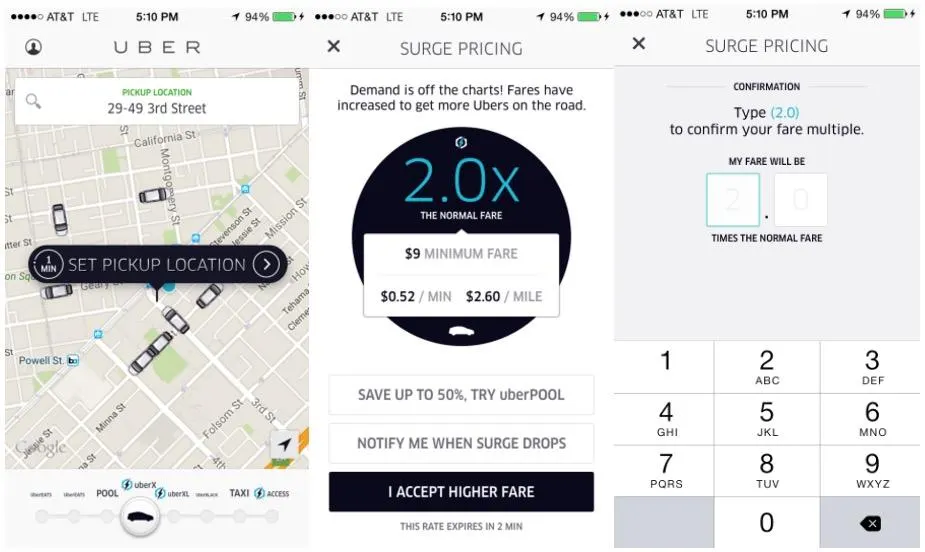
Uber’s pricing strategy was all about transparency and flexibility.
They solved the age-old problem of opaque taxi fares with a simple yet effective approach:
A low base fare plus clear charges for time and distance, all displayed upfront.
No more surprises or haggling with drivers!
But here’s where it gets interesting: Uber introduced dynamic “surge” pricing during peak times.
Higher prices meant more drivers on the road when demand was high, ensuring availability even during rush hours or bad weather.
As Uber’s network grew, they gradually lowered prices to attract more riders, betting on volume to drive profitability.
However, this race to the bottom has led to some serious profitability challenges.
We’ll dive deeper into this issue later, but let’s just say Uber’s path to profitability is… complicated.
Acquisition 🚀

Uber’s acquisition strategy was as aggressive and disruptive as its ride-hailing service.
Let’s break down some of the main details of their acquisition strategy!
Expansion Playbook
Uber’s expansion playbook was their main growth superpower.
They’d secretly enter a market, recruit drivers and customers through ambassadors, and offer free rides to first-timers.
This created a strong customer base and exploited legal loopholes – sneaky, right?
When faced with legal threats, Uber didn’t back down.
They’d argue that customers wanted their service and even cover drivers’ fines and legal costs during government sting operations.
Next, they’d start lobbying the government, pushing for regulations that would legalize their operations.
Meanwhile, they’d work on building a positive image by gaining support from local charities and stakeholders.
The final steps?
Monopolize the market by hiring more drivers and ramping up promotions.
Oh, and let’s not forget undermining the competition by recruiting their drivers with juicy sign-up fees.
Cutthroat? Maybe.
Effective? Absolutely.
Referral Marketing
Uber’s referral program offered a “give money-get money” deal where users could give friends free rides while earning credits themselves.
This wasn’t just good for riders – drivers got in on the action too, earning referral incentives for bringing new drivers on board.
It was a win-win-win situation that fueled Uber’s viral growth.
Some superfans even managed to rack up over $50,000 in referral credits!
Word-of-Mouth Strategy
Uber knew the power of a good recommendation.
They targeted high-profile Silicon Valley individuals to endorse the brand, offered first free rides to users in new cities, and used those referral programs to keep the word spreading.
Influencer Marketing
Remember the “RiderZero” campaign?
Uber gathered influencers from different cities to try out secret Uber rides.
We’re talking big names like Zaheer Khan and Anil Kapoor.
The goal?
Create a Twitter storm and get millions of followers buzzing about Uber.
Campaigns and Social Media
Uber didn’t stop at word-of-mouth.
They launched targeted campaigns and dove headfirst into social media, engaging users across Facebook, Twitter, Instagram, and YouTube.
They even leveraged Facebook Messenger for direct ride bookings.
Strategic Partnerships
Uber knew that to truly dominate, they needed to be everywhere.
So they got smart and started building strategic partnerships with big names like McDonald’s and collaborating with the NFL Players Association.
These partnerships helped Uber reach new audiences and establish their place in users’ daily lives.
This aggressive, multi-pronged approach helped Uber rapidly expand globally despite facing more regulatory hurdles than an Olympic hurdler.
It wasn’t all smooth riding it got results!
Growth Loops 🔄🚀
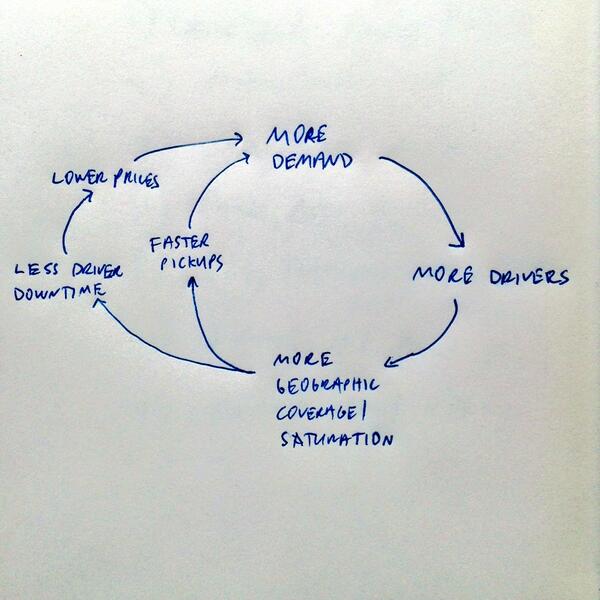
Uber’s ability to use data and leverage network effects has created a perpetual acquisition and engagement engine.
Here’s how it works:
Step 1: More Demand
As Uber attracts more riders, demand for rides increases.
Step 2: More Drivers
Increased demand attracts more drivers to the platform.
Step 3: More Geographic Coverage
With more drivers, Uber’s coverage expands, reaching new areas.
Step 4: Faster Pickups
Wider coverage means faster pickups for riders.
Step 5: Less Driver Downtime
Faster pickups lead to less downtime for drivers between rides.
Step 6: Lower Prices
Less downtime allows Uber to lower prices while maintaining driver earnings.
Step 7: Even More Demand
Lower prices attract even more riders, kicking off the cycle again.
With each iteration, Uber’s growth loop tightens its grip – catalyzing continuous rider engagement, driver recruitment, and geographic expansion.
An incredibly powerful machine for perpetual growth.
Activation 🎬🔥
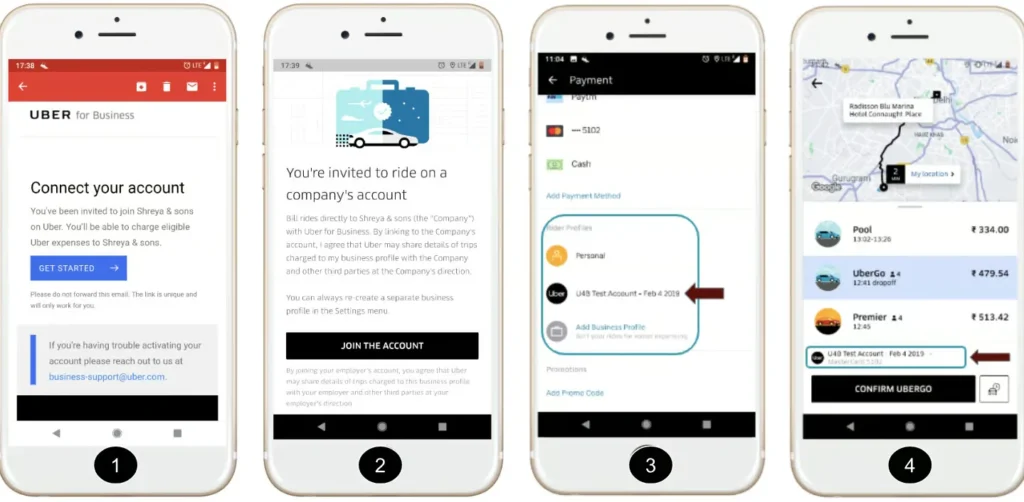
Uber’s activation strategy is a complex dance completely different from your average app, balancing two distinct user groups: riders and drivers.
For riders, the “aha” moment comes when they first experience the convenience of hailing a ride with a few taps.
Stranded and desperate?
Uber swoops in, and suddenly, transportation is transformed.
But drivers have a different “aha” – realizing their car can become a flexible money-maker.
Uber’s challenge?
Ensuring both these moments happen swiftly and smoothly.
They need happy drivers for quick pickups and enough riders to keep drivers busy.
It’s not just about slick onboarding but creating an ecosystem where riders find prompt, great rides and drivers feel valued.
In essence, Uber’s activation orchestrates that perfect first encounter between riders and drivers.
Retention 🔒❤
While acquisition is critical, Uber’s true edge lies in their ability to retain engaged drivers and riders.
Their retention strategy is about balancing the needs of both sides of their marketplace.
Riders
For riders, Uber offers personalized recommendations based on ride history, a tiered rewards program, milestone celebrations, and exclusive discounts.
The great experience from booking to drop-off keeps users coming back for more.
Drivers
Drivers, on the other hand, are motivated by milestone bonuses, achievement badges, and competitive leaderboards.
Uber also provides personalized challenges tailored to individual goals and partner perks like healthcare and car maintenance discounts.
By gamifying the experience and offering rewards, Uber keeps riders hooked on the convenience and drivers motivated to provide top-notch service.
Referral 📣🎉
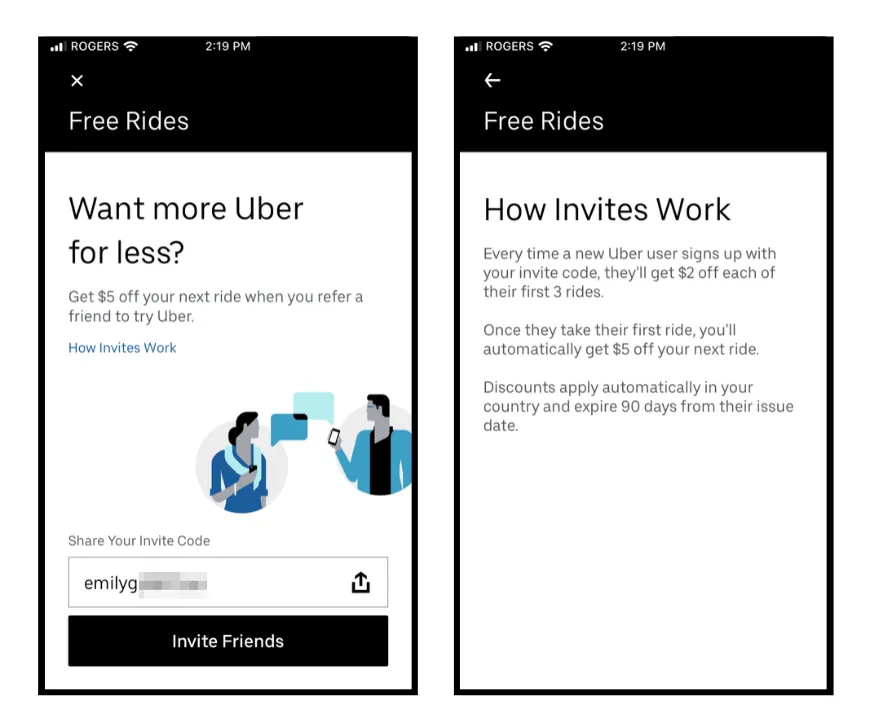
Uber’s referral program is a growth engine on steroids.
It’s not just about getting new users – it’s about turning every rider and driver into a mini-marketer for the platform.
Here’s how it works:
Uber gives both riders and drivers a unique referral code.
When a new user signs up with that code, both the referrer and the newbie get rewarded.
For riders, it’s usually a sweet discount on their next ride.
Drivers?
They can earn cold, hard cash for bringing new drivers on board.
But Uber doesn’t stop there.
They’ve gamified the whole process, offering bigger rewards for more referrals.
Some super-referrers have even racked up over $50,000 in credits!
This “give money-get money” approach creates a win-win-win situation.
New users get a discount to try the service, existing users earn rewards, and Uber grows its user base at lightning speed.
Challenges 😰
While Uber’s growth story is impressive, it’s not all smooth rides and five-star ratings.
The company faces some serious roadblocks on its journey to long-term success.
First up, the elephant in the room: Profitability.
Despite its massive user base and global presence, Uber is still bleeding money.
In 2020, they reported a net loss of $6.77 billion.
Ouch!
The company’s path to profitability is… well, let’s just say it’s more of a winding country road than a straight highway.
But money isn’t Uber’s only problem.
The company’s early “move fast and break things” culture led to some serious PR nightmares.
From allegations of sexual harassment to battles with regulators, Uber’s reputation took quite a beating.
In 2017, things came to a head.
A blog post by a former worker exposed a toxic work culture, leading to a series of scandals that ultimately forced CEO Travis Kalanick to resign.
The new leadership has been working to clean up Uber’s name, but repairing a damaged brand isn’t easy.
These challenges show that even with a killer growth strategy, a company needs a solid foundation of ethics and sustainable business practices to succeed in the long run.
Lessons Learned 🎓
Uber’s journey from a simple idea to a global transportation giant offers some killer insights for aspiring entrepreneurs and growth pros:
Lesson 1: Solve Real-World Problems
Uber was born from a genuine frustration with getting a cab.
The takeaway? Keep your eyes peeled for everyday annoyances – they might just be your next big business idea!
Lesson 2: Adopt Adaptability
Uber’s pivot from a luxury black car service to the more accessible UberX shows the power of flexibility.
The takeaway? Don’t be afraid to evolve your business model as you learn more about what your customers really want.
Lesson 3: Growth Can Be a Double-Edged Sword
Uber’s aggressive expansion led to impressive growth but also resulted in legal battles and PR nightmares.
The takeaway? Balance your hunger for growth with ethical considerations and regulatory compliance. Sometimes, slow and steady wins the race.
Lesson 4: Culture Matters… A Lot
The toxic work environment exposed in 2017 shows that what happens inside your company can have major external consequences.
The takeaway? Invest in building a positive company culture from day one. It’s not just nice to have – it’s essential for long-term success.
And there you have it!
Uber’s journey from a simple idea on a snowy night to a global transportation powerhouse is remarkable.
From their aggressive expansion tactics to their innovative use of data, Uber has rewritten the rules of growth in the digital age.
But as we’ve seen, rapid growth comes with its own set of challenges.
Profitability issues and cultural missteps remind us that sustainable success requires more than just a killer app and a big user base.
Found this fascinating?
Spread the love and share with your fellow growth geeks!
Till next time, keep growing! 🚀

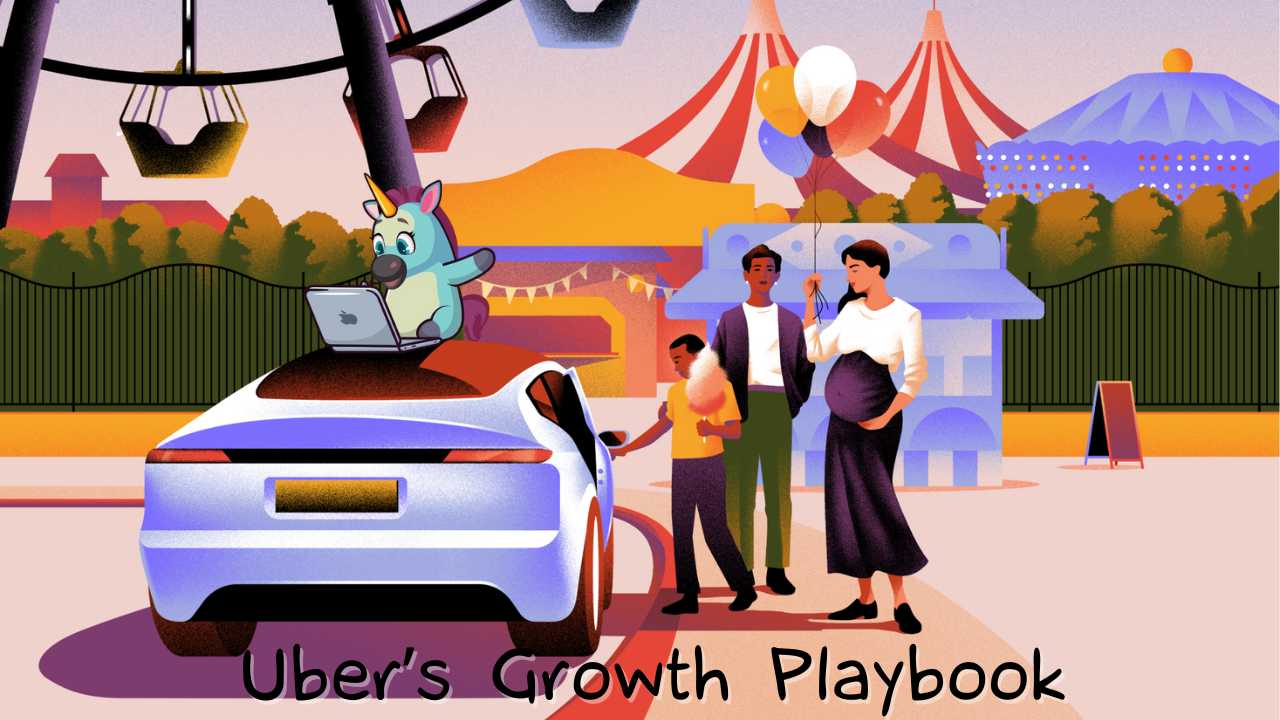
Leave a Reply